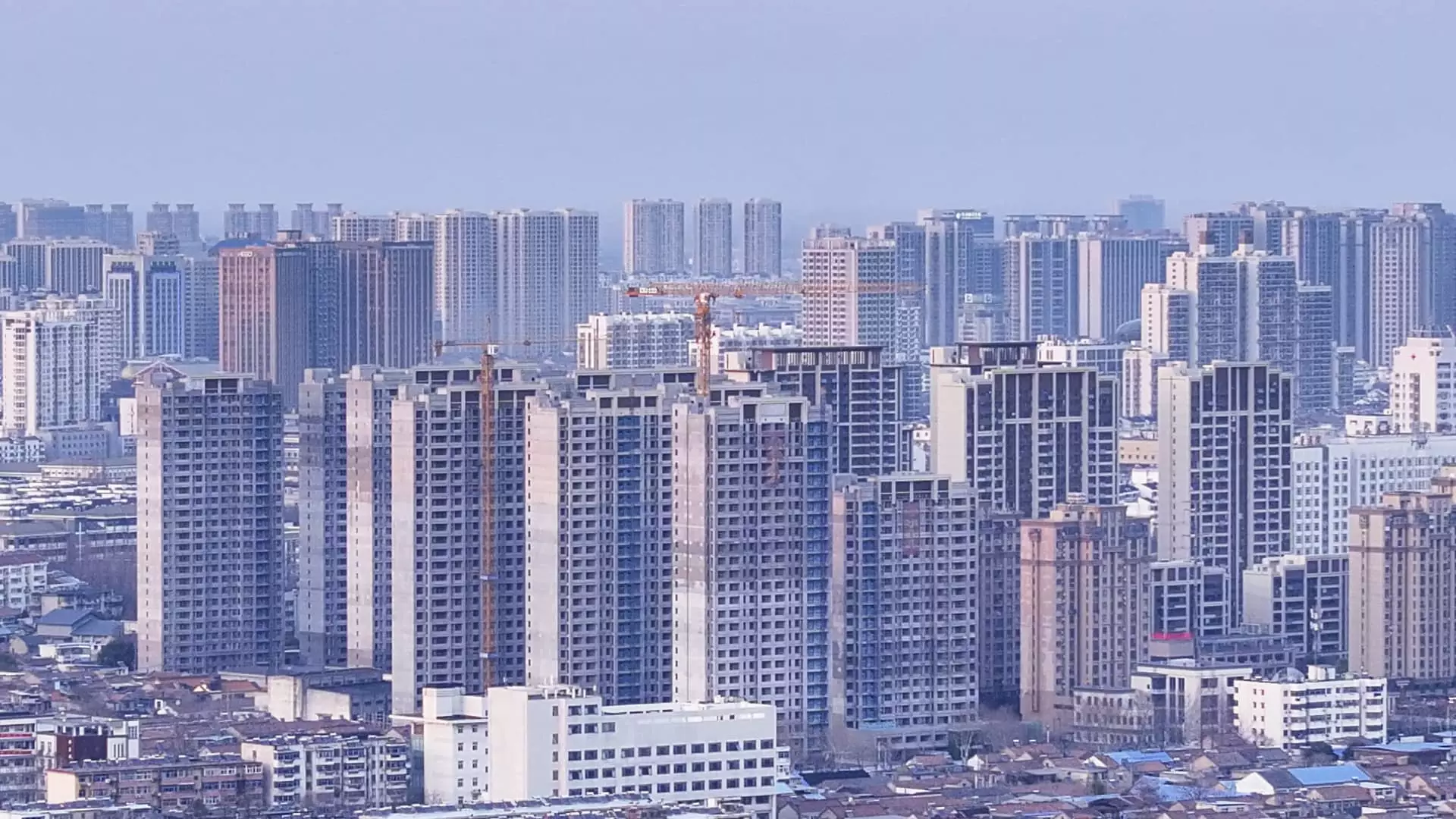China’s real estate market, the backbone of its economic growth, has been navigating treacherous waters since late 2020. Multiple indicators suggest that we are nearing stabilization, yet this notion is not without its skeptics. Reports from analysts at UBS indicate a potential turning point, pointing to a modest 30% increase in secondary home sales in major cities like Beijing and Shanghai as a glimmer of hope. However, it’s crucial to assess whether these positive signals truly indicate a rebound or if they merely mask deeper systemic issues that continue to loom over the market.
The stark reality is that despite these indicators, the real estate sector still grapples with significant challenges. With major developers, including the infamous Evergrande, defaulting on debt obligations, the confidence in the sector remains tenuous. The total property sales have plummeted by nearly 50% since 2021, generating further skepticism regarding the sustainability of any perceived recovery.
The Role of Government Policy in Market Dynamics
Chinese policymakers have attempted to intervene, declaring a need for a “halt” to the decline of the real estate sector, which contributes significantly to household wealth and GDP. However, the effectiveness of these measures is called into question as the market shows only minimal signs of recovery. Regulatory crackdowns on developers’ heavy reliance on debt seem to have exacerbated the situation rather than alleviated it. It begs the question: can political will effectively pivot a spiraling economy?
Indeed, while there is talk of improvement, the reality is that until significant financial backing from the central bank is forthcoming, we cannot expect substantive growth. The enthusiasm around recent policy shifts should be tempered with caution, as analysts express wariness about whether they can effectively boost consumer sentiment or restore purchasing confidence.
Emerging Investment Opportunities Amidst Challenges
Despite the bleak outlook, some analysts assert that there are promising signs for foreign investments in the real estate sector. Reports of Singaporean developers actively acquiring land in China illustrate a resurgence of foreign interest, showing that some are willing to bet on potential recovery. Companies like Invesco are also exploring innovative avenues like affordable housing partnerships to capture market share as demand shifts.
However, it would be naive to overlook the contradictions at play. While an influx of foreign capital could present opportunities for growth, the need for financing remains paramount. The reality that existing investors face grim forecasts—with property investment still down nearly 10% in early 2023—underscores that no amount of foreign interest will salvage a market plagued by fundamental weaknesses.
The Long Shadow of Investor Sentiment
An often overlooked yet critical aspect of the market is consumer confidence. Recent analyses indicate that improved secondary home sales, while promising, do not tangibly benefit developers, whose revenues depend primarily on primary sales. This distinction is pivotal; without a revival in consumer sentiment and demand for newly built homes, any short-term gains are likely to falter.
The sentiments of potential buyers play an undeniable role in shaping market outcomes. With housing prices rising amidst economic uncertainty, the fear of missing out hasn’t translated into decisive buying behavior. It’s not that individuals don’t want to invest, but rather that they’re waiting for a clearer signal that the market has stabilized.
Addressing Fundamental Market Shortcomings
Critics assert that while major industry players and analysts tout market stabilization, a real recovery remains elusive without addressing the broader concerns linked to inventory levels, affordability, and demand stability. The nearly 30% drop in new home starts in early 2023 indicates that developers remain wary about overextending and engaging in risky investments.
As we analyze the intertwined dynamics of government policy, foreign investment, and consumer sentiment, it becomes evident that for real estate stabilization to become a reality, systemic change is imperative. This shift will need to center around addressing inventory concerns and ensuring that new housing remains accessible, all while restoring investor and consumer confidence, which isn’t a swift process.
While optimistic forecasts herald signs of recovery, they must be examined through the lens of the numerous hurdles facing the real estate sector. If we are to make urban living sustainable and inclusive in China, a collective commitment to addressing the industry’s core issues is essential, beyond the superficial gestures that have characterized responses thus far. The journey ahead remains fraught with uncertainty, and the real estate market’s future is as precarious as it is intricate.

Leave a Reply